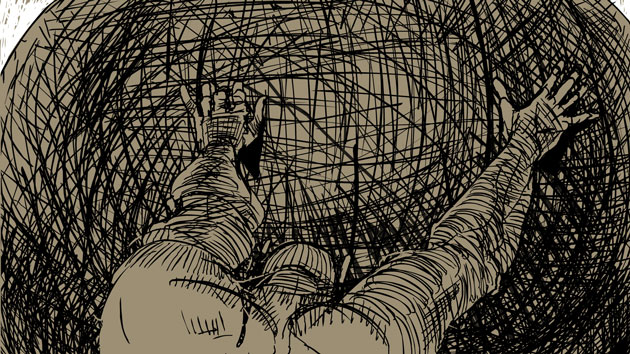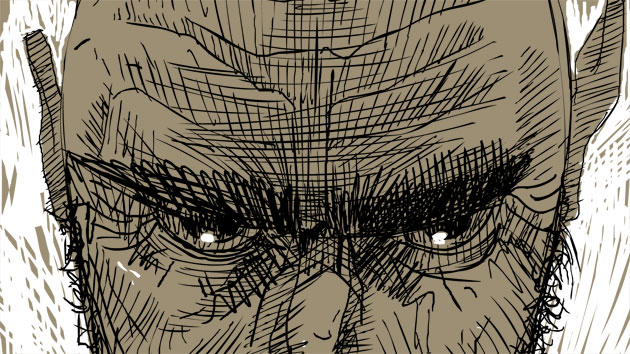
(February 20th 2019) ANIMATICS
pre-production, sales tool, the first stage of pure film and a neologism thrown in for good measure
My aim for this essay is to illuminate some concepts of film making as I understand them and to show that animatics are a very pure form of storytelling that deserves more consideration.
Animatics are used in two purposes primarily: (1.) within film making as part of pre-production and (2.) within marketing as a tool of testing with audiences and to get approval from clients and agencies.
(1.) Here you can see Steven Spielberg describing how he utilised animatics to plan the action scenes in War of the Worlds.
(2.) Here you can see a rather quick animatic done to show to an audience to green light a much more elaborate 3D animation later.
Animatics of the former kind are shared between professionals and often undergo many iterations, they tend to be a little rougher and more abstract in the way the pre-renders or drawings are made. Whereas animatics for marketing are made with the intention to get approval for an idea from audiences that are not themselves professional film makers - hence they are usually rendered with more care, if drawings are involved, they often look very elaborate.
Here are some storyboards I worked on with my friend Steven Bagatzky



Nevertheless, both ways in which animatics are used show us how they are understood and why they don't get a lot attention. They are perceived either as mere stages to get a real film project finished or a marketing campaign approved. They are not seen as something worthwhile in themselves.
As a filmmaker and a teacher, I think this is unfortunate because both filmmakers and students (and student filmmakers) always have an abundance of story to tell and never an abundance of time or money.

not comic nor skript
Most productionsn start with some sort of script, someone wrote down the story in text form. Then there might be a storyboard - pretty much the first visualisation of the script.
Storyboards are a subgenre of comics with its own rules and conventions linked to film preproductions. Here every new drawing represents a different moment in time. Storyboards are a very fascinating subject on their own but for now let us say they are the first visualisation of the script. I can also recommend the book "Framed Ink" by Marcos Mateu Mestre on the subject.
People can be forgiven to think animatics are just storyboard drawings put one after another in a montage software like iMovie or Premiere.
But even if you crudely put your storyboard scribbles into your program, this step automatically adds the magical ingredient that seperates a written text and a comic from film: time!
Let's say you have your storyboard consisting of three drawings. Now you just cut them up and put them in Imovie. Suddenly, you have to make the conscious decision how long each of the drawings has to stay on screen to tell your story.
You are not just drawing one drawing after another, you are drawing with time! Congratulations, you are a film maker now.
But a film?
So, this would already be my main point. I have been working in this field for a little while now and I also look at making ofs and industry talks but I don't remember anyone being as crazy about this moment when an idea becomes a film for the first time. For me animatics are not something I have to do because my clients are too dim to judge an idea on a storyboard and styleframe. Often the animatics are the most fun parts of the production for me. I rarely have to recut (and lose finished work) because my timing is set here as well.
As a student, I used to make animatics much rather than script and sketches just because it was always much more fun to me. Especially when I had a microphone and a guitar nearby - I could keep myself entertained for days.
So back in the day I thought this was due to my grotesque impatience or that I am a lazy animator. Both might be the case still.
I think I am just very much in love with seeing film grow and animatics are the most basic form, the first iteration and purest form of a film.
Animatics can be set up very crudely but still be fun and, most importantly, tell the story.

Neologisms are plus double good
So I was thinking that the word "animatic" is a little life less and technical and it sounds too much like animation. Something more to the point would be nice. Animatics used to be called Laicas, not after the russian dog but the german camera manufacturer. But I don't think going back to those terms makes it better.
Film Sketch
Or german : Filmskizze
Or german : Filmskizze
Just as a sketch represents the basic idea and concept of a finished drawing or painting, the word film sketch encapsulates what it is in relation to film. The sketch. The first timed embodiment. But also the underlying skeleton. The foundation.
And yes, there might also be an argument for the sales minded agency people: Animatic sounds similar to animation and can also look quite similar to finished animation if the final style is somewhat on the tradition 2D animation style.
I heard this client-agency exchange more than once: "super animation! And so early, so we can have the roll out next week then!" "Sorry, this is the animatic, if you aprove this, we will work eight more weeks on the animation." "Ah okay :((( "
So, If you send your film sketches in the future, this situation might be avoided.
Of course, you can use either word but I hope I showed you how I feel about animatics, I mean film sketches: They are the foundation of good storytelling in film and they can be a lot of fun to make and look at.
Here are some of my fun film sketches.